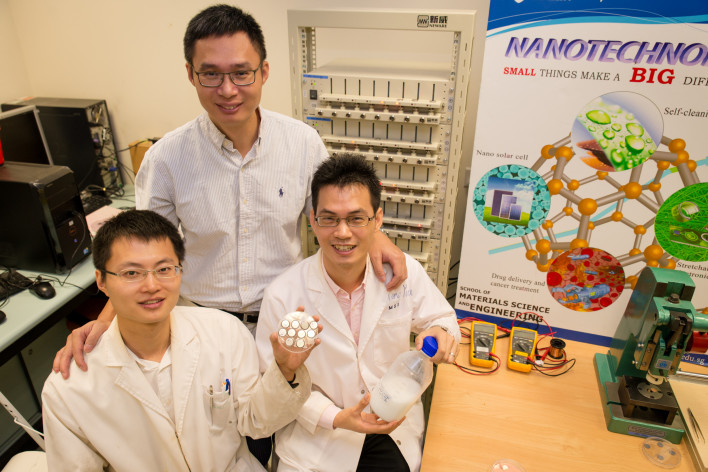Engineers have been struggling for years to develop some new breakthrough idea that will push battery technology to the next level. Instead, we’ve been stuck with iterative improvements that limit the power and usefulness of our mobile devices. Perhaps batteries aren’t the right way to go at all, though. A doctoral researcher at Aalto University in Finland has developed a prototype of a highly efficient micro fuel cell that runs on alcohol. Maybe in the future when you swing by the bar for a drink, you’ll also be able to top off your phone.
We’re used to hearing about fuel cell technology in motor vehicles, but at the most basic level, fuel cells are simply a way to generate electricity. There’s no reason a fuel cellcant work in a mobile device, and the high energy density would make it potentially far superior to a lithium-ion battery. It’s just a matter of making the cell small and durable enough to ride around in a smartphone in your pocket all day.
The Aalto University fuel cell was designed by Gianmario Scotti for his doctoral dissertation. Like larger fuel cells, the micro cell consumes alcohol and oxygen, outputting water, carbon dioxide, and of course, electricity. It’s able to run on either methanol or ethanol, but the latter is preferable. Not only is ethanol easier to produce with our current energy infrastructure, it comes with minimal health hazards (this is the alcohol we can consume safely in moderation). Methanol, by contrast, is highly toxic when ingested, and is also a skin irritant.
The cell designed by Scotti is a tiny aluminum wafer just 14 mm2 and less than a millimeter thick. Using a picosecond laser allowed Scotti to fabricate the cell using aluminum rather than the more common silicon, which helped to reduce the cost and weight. Despite its small size, supplying it with alcohol outputs 0.5 volts — hydrogen can produce a full volt, but is far less practical. A few of these cells wired up in series would provide enough juice to keep your phone running. Then it’s just matter of keeping the reservoir supplied with reactants.
Powering smartphones is really just the most consumer-facing use for micro fuel cells. Scotti suggests that these same devices could be of use with micro-satellites, which need to keep weight down for launch and only remain in orbit for a limited time. As for when these power sources might find their way into mobile devices, Scotti says it could beanywhere from 1-10 years. Until then, you’ll just have to fill yourself with alcohol instead of your phone.






0 comments:
Post a Comment
Click to see the code!
To insert emoticon you must added at least one space before the code.